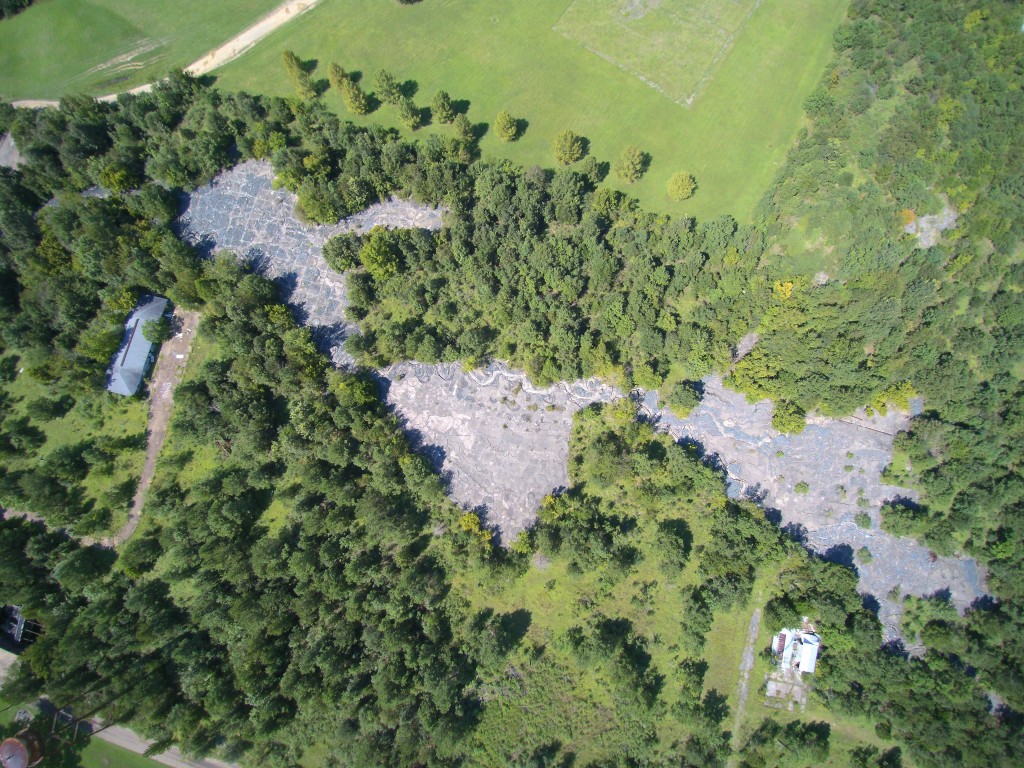AWESOME PROJECT: The greatest water engineering model you’ve never heard of is getting a new lease on life
Published October 28, 2016
Never heard of the Mississippi River Basin Model? Neither have most people, which is a real shame, because it’s a piece of world history, and it is magnificent. It’s a beautifully exact, awesomely gigantic, hydraulic model of the entire Mississippi River Basin (that’s about 40% of the US, for perspective), built in a 200-acre park in Jackson. The model was conceived of in the wake of the great Mississippi flood of 1927, and the subsequent flood in ’37, after which the U.S. Army Corps of Engineers finally really accepted that just building levees all over the place wasn’t going to do the trick. They needed a way to act more strategically, to see exactly how water was going to flow in all those streams and nooks and crannies, and into towns. They needed a way to test out the basin’s response to various kinds of floods – with real earthen banks, and real water. Here, check out Atlas Obscura’s super-quick, super-info-packed video explanation.
The model was completed in 1966, and tourists came from all over the country to visit. It was a world wonder! And it was really helping engineers effectively manage floods up and down the Mississippi, saving the country billions of dollars and inestimable grief. It was – still is – the largest model of its kind in the world. Chinese engineers struggling to manage the Three Gorges Dam came to study the river model. But after six years of use, the U.S. Army Corps of Engineers had run their last hydraulic test on the model, and didn’t need it anymore. No one did. More to the point, no one had the money to maintain it. And so it sat. And sat. And was largely forgotten. Hard to believe we could just walk away from a masterpiece that took 23 years to build, right?
Never too late for a little repurposing
In January of this year, a group of civic-minded engineers in the Jackson area got interested in the model, and decided to go out and visit. They knew that this great utilitarian sculpture was being lost to time, and wondered what they might be able to do. Even if they just cleared the area out a bit, and made it easier to access, that would be a win, they decided. They had to start somewhere. “You learn about it, but then once you go out there, something changes,” says Sarah McEwen, a member of the group and a civil engineer with Wagoner Engineering. “Something happens. You just feel this need – we can’t let this go to waste. We can’t let this engineering marvel disappear. You can walk in the model from Vicksburg, Mississippi to Omaha, Nebraska – you can see how the river system interacts in this nationwide network. It’s an engineering playground.”
She and the group organized a volunteer clean up day, inviting anyone interested to show up with some gardening gloves and dig in. Fifty people showed up, and there was enough interest that the group has its sights set on monthly volunteer days, until the site is clean enough that they can contemplate a step two. Right now, McEwen and her team are raising money via ioby to cover gloves, water, goggles, a wood-chipper, and other basics for the second volunteer cleanup day. “This was kind of a teenagers’ hiding spot,” she explains, “and there are some homeless who have found this as a hidden, tucked away location. People have climbed the watchtower, they’ve climbed the water tower. They’ve hung out in the abandoned buildings.”
Why bother?
Well, to start, the model is not only a piece of history, but also represents an important chapter in American engineering. “Before computer modeling,” explains McEwen, “this was one way of looking at a whole entire watershed, to see the impacts that you could have on other communities and other portions of the river. The river is like a living, changing being. So it changed the type of analysis that was done, and it changed the shape of hydraulic engineering from that point, and led to what my career is today. It’s all developed on concepts and theories performed at this park.”

It would cost billions to restore the model to what it was in its glory days, so that’s not really on the table, but it’s not at all unrealistic to imagine it restored as an educational tool for students in Mississippi and beyond. McEwen and her team hope eventually to apply for grants to create a little science center on the site, and maybe clear out some running trails in the park. “We think it’s important historically to keep it, in the context of German POWs did a lot of the earthwork,” explains McEwen. ”It’s also just a great engineering tool – you can teach kids about geology, about hydraulogic principles. We have this really cool tourist and educational tool just sitting in the park.”
What if, on the other hand, nothing is done to save the model? “We’d lose a piece of history,” says McEwen. “This could easily be one of the greatest engineering models, I think, in the world. You’re losing a physical example to share with children the types of things that their grandparents and great grandparents did before computers.”
To learn more, or to donate, check out the Friends of Mississippi River Basin Model Facebook page, as well as their ioby campaign page.
Feeling inspired? Want to take action in YOUR neighborhood? If you have awesome ideas about how to make your town greener, safer, and more fun, let us help! Tell us your awesome idea right here. We’d love to help you get started today.
Pssst…. In OTHER ioby news: Do you help feed your community? Here’s how a few kitchen updates are helping one nonprofit better feed its neighbors.


